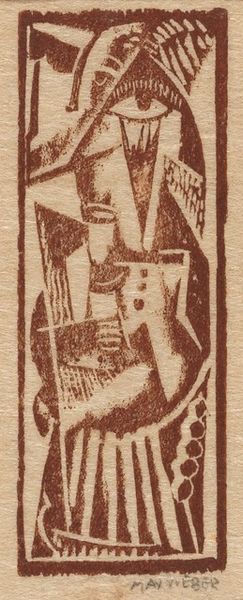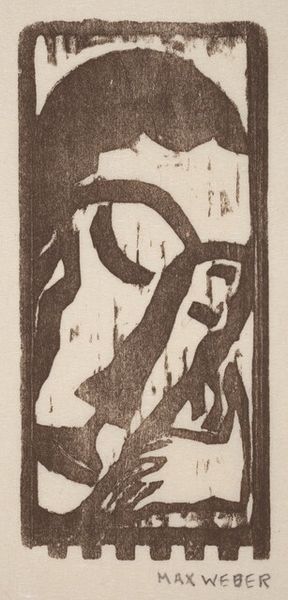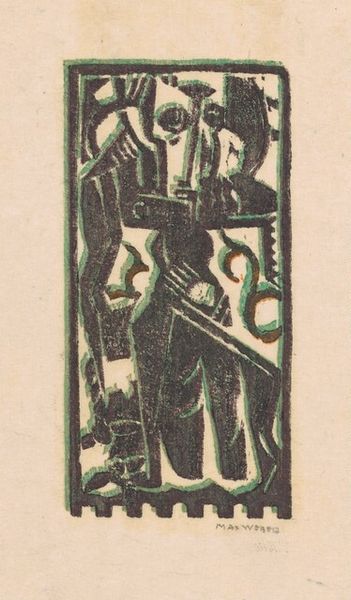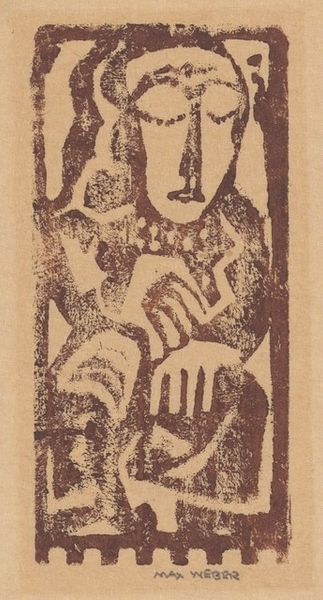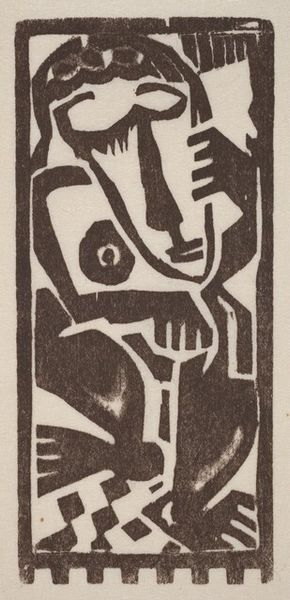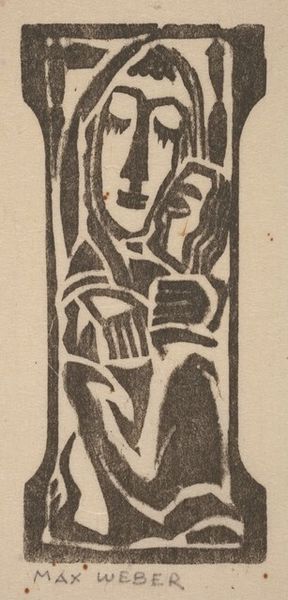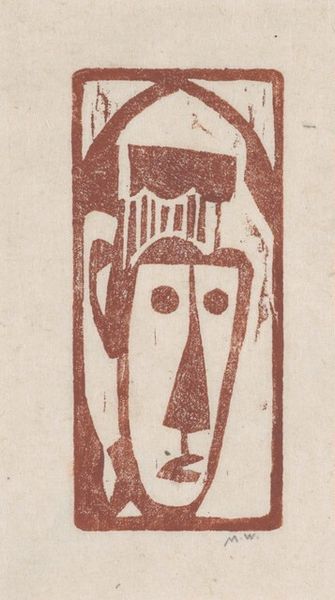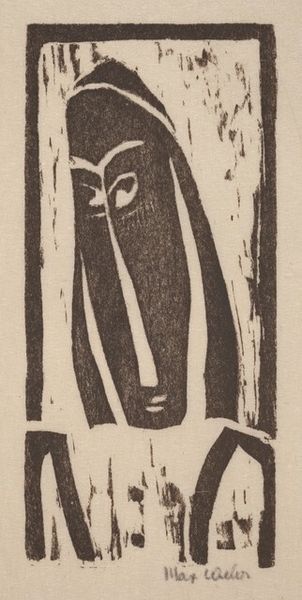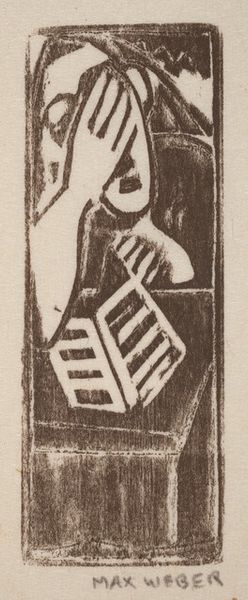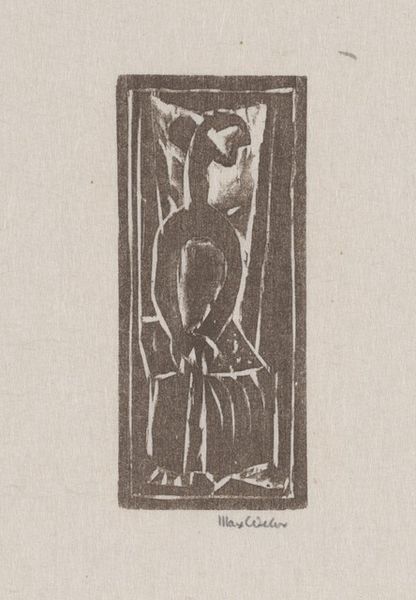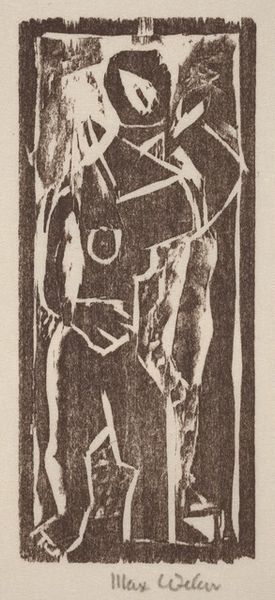
print, linocut, woodcut
#
portrait
#
cubism
#
ink painting
# print
#
linocut
#
figuration
#
linocut print
#
geometric
#
expressionism
#
woodcut
#
line
Dimensions: image: 10.7 × 4.9 cm (4 3/16 × 1 15/16 in.) sheet: 19.4 × 15.1 cm (7 5/8 × 5 15/16 in.)
Copyright: National Gallery of Art: CC0 1.0
Curator: This is Max Weber’s “Portrait,” created sometime between 1919 and 1920. It’s a print, specifically a linocut or woodcut, displaying Weber’s exploration of both Cubism and Expressionism. Editor: Stark and blocky, isn’t it? The composition is striking. That large, singular eye… it’s quite intense and confrontational. Curator: Weber's Cubist leanings are apparent in the geometric reduction of form, and the expressive quality, even the crude nature of the carving, speak to a deeper undercurrent within early 20th-century American art. This period saw artists grappling with rapid social and technological changes, channeling anxieties through fragmented depictions. Editor: You can practically feel the pressure exerted onto the block to carve away those negative spaces. It speaks volumes about the labor involved, stripping away material bit by bit to reveal an image. It makes you consider printmaking not just as reproduction, but as a deliberate act of sculpting. Curator: The politics of representation during that era are intriguing. How does an artist move past academic realism and grapple with individual subjectivity during a time of such global unrest? Weber, having studied in Paris, translated European modernism into something uniquely American, relevant to its social context. Editor: Yes, it’s that handmade feel that pulls me in. Linocut and woodcut, unlike etching or lithography, really foreground the manual effort. There's a directness, almost a rawness to the mark-making, and that translates into a certain emotional punch. It reminds us of the connection between artist and material. Curator: Certainly, the raw intensity here forces a question about the very definition of portraiture. Is this a likeness, or something that aims to express psychological states more profoundly? Editor: I agree. It becomes less about physical accuracy and more about capturing… essence, or a mood. A testament to how labor and materials shape the emotional reception of art. Curator: Well, this particular "Portrait" serves as a poignant lens through which to view the artistic responses to early 20th-century society. Editor: Indeed. Its crude intensity encourages us to consider how method can alter meaning in art.
Comments
No comments
Be the first to comment and join the conversation on the ultimate creative platform.

